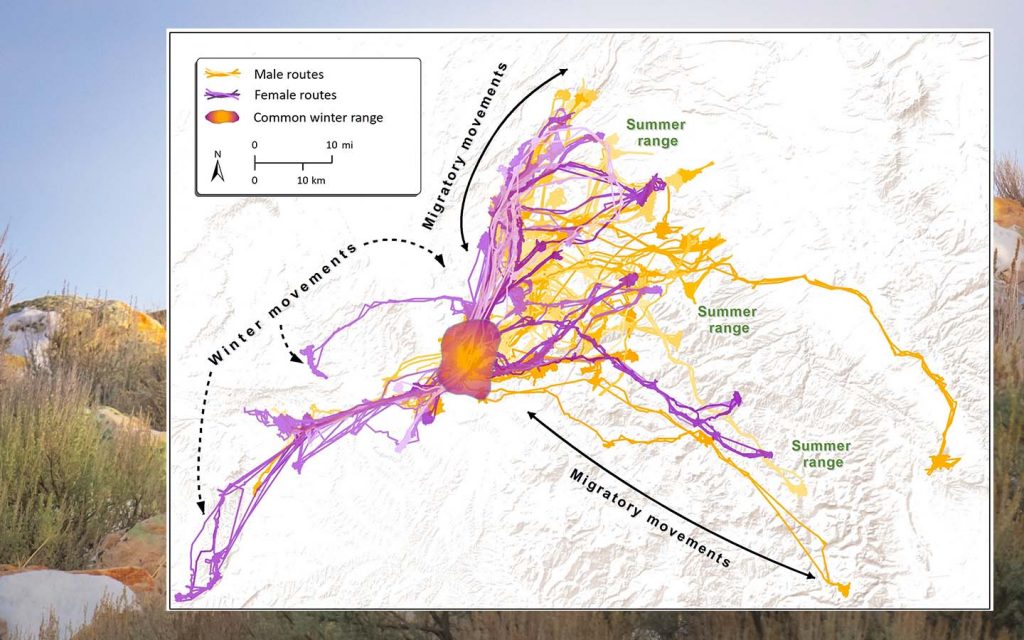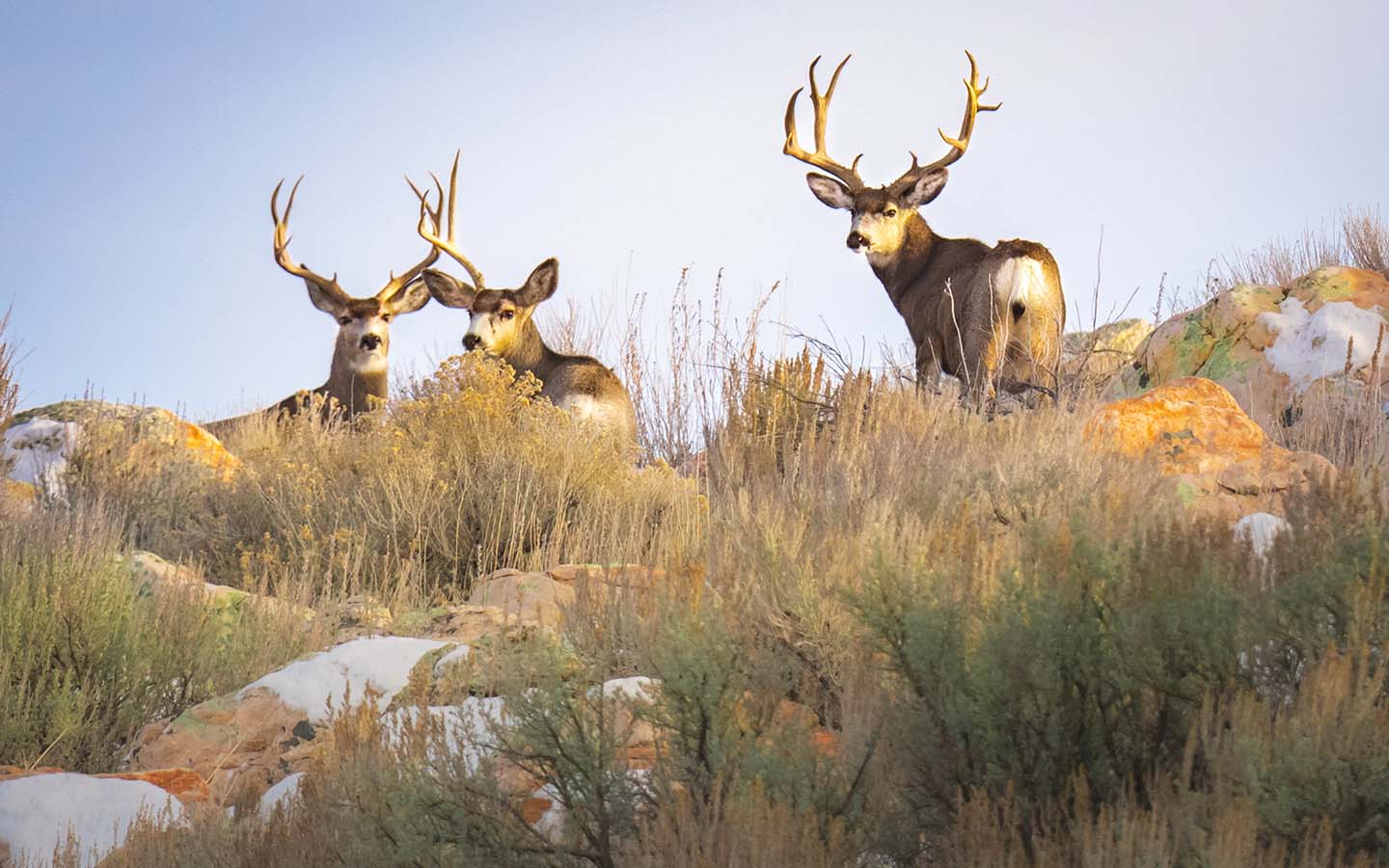How hunting season affects muley buck migrations
For years, researchers and managers who study mule deer migrations have placed GPS collars on female deer, primarily because they are the best indicator of reproductive success for populations. But managing bucks also poses a challenge, especially since hunters often go after big bucks rather than does.
This year, the first study using GPS technology to understand the influence of hunting season on buck movements was published in the Journal of Wildlife Management. Patrick Rodgers, an associate research scientist for the Wyoming Migration Initiative and lead author of the study, worked with the Wyoming Game and Fish Department (WGFD) in South Central Wyoming to continue a project started by WGFD biologist Tony Mong. The team captured 95 bucks and fit them with GPS collars, and Rodgers tracked the bucks for three years. During that same time other researchers had already been collaring female mule deer in the area for a different study, allowing Rodgers to compare buck and doe movements.
“We found that bucks migrate differently from does, they choose different routes, they started their migration earlier and sought out specific habitats,” he said. Rodgers and his team looked deeper into the data to understand what types of factors, such as weather, food quality, and migration distance, influenced migrations. “The bucks were more likely to leave their summer range earlier to get a head start on their migration if they migrated longer distances to winter ranges,” Rodgers said. When it came to weather, both bucks and does started to migrate when the snow began to fall, moving to lower elevations to avoid deep snow.

Rodgers also tackled an emerging question: whether the onset of hunting can prematurely trigger migration. The study found that the hunting season had little influence on the timing of buck migration when compared to snowfall and migration distance. But, Rodgers noted, “Bucks seemed to seek out areas that were far away from roads, roads that were used by hunters during the season…but does, on the other hand, moved to areas that had the highest quality of forage, regardless of whether they were close to a road or not.” Rodgers and his co-authors found that roadless areas on mule deer summer range and within migration corridors reduced the effects of hunting disturbance on buck migration. They suggest that managers may consider limiting motorized vehicle use to reduce hunting disturbance on mule deer migrations.
“Sex-Specific Behaviors of Hunted Mule Deer During Rifle Season,” The Journal of Wildlife Management. Patrick A. Rodgers, Hall Sawyer, Tony W. Mong, Sam Stephens, Matthew J. Kauffman. onland.link/buck-gps





